Notes
At Trump’s Invitation: Revisiting Pulitzer-Winning Philippine Drug War Photos
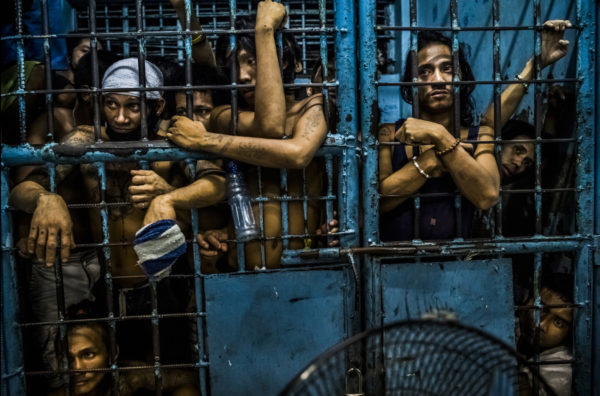
Daniel Berehulak’s photos and text of the drug war in the Philippines were published by The NY Times last December. At the time, they presented a grisly tour of the lethal campaign new Philippine President Rodrigo Duterte was perpetrating on his own country under the guise of a mass drug epidemic.
That, of course, was before Donald Trump won the presidency, and Jefferson Sessions took over the Justice Department. So, when the project earned photographer Daniel Berehulak a Pulitzer prize last month and the images circulated again, what was also on my mind was how Duterte’s terror, and these photographs, related to the homefront.
At the moment, there is quite a gap between criminal justice and crime fighting in Duterte’s Philippines and Trump’s America. Still, the parallels are growing. Trump and Sessions are making private prisons thrive again. They are attempting to revive the “war on drugs.” They are unraveling bipartisan criminal justice reform, and prison sentence reform. They are reviving such draconian practices as the chain gang and life sentences for minors. And they are walking back federal oversight of troubled local police departments. In the larger scheme of things, you can see the two men working from the same playbook. There is Duterte’s campaign and personal history of violence, and there is Trump’s incitement of violence. Also, Duterte propaganda narrative, pinning the nation’s ills on illegal drug dealers and illegal drug users, is not any different than the Trump administration blaming illegal immigrants for much of the country’s violent crime when the facts don’t support that at all.
All of which brings me back to Berehulak’s photos, especially after Trump last weekend offered an invitation to the Philippine despot and self-avowed killer to visit the White House.
The photos, like the one leading this post, are not about criminal justice. What we see in that photo are political prisoners. Here’s the caption: Given the political agenda, that some or even many of these men are sociopaths or criminals is almost beside the point. In the larger picture, they are victims and scapegoats.
Inmates watch as other drug suspects are processed in a local police station on Oct. 12. The police say more than 35,600 people were arrested between July and November in antidrug operations the government calls Project Tokhang. The name is derived from a phrase meaning “knock and plead” in Cebuano, the president’s first language.
The description might as well refer to a manufacturer’s supply chain.
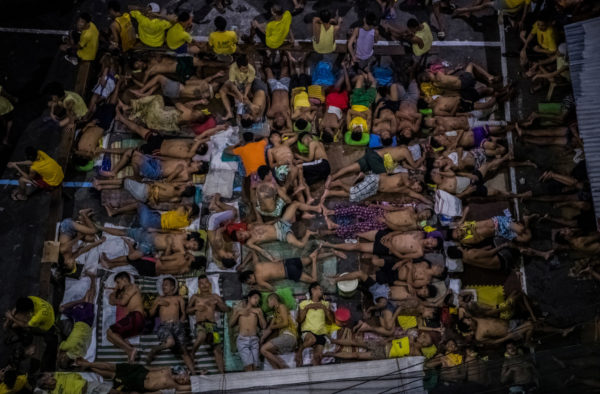
This is a “paint with one brush” situation. This photo speaks to the scale of state abuse as opposed to chemical abuse. With the singular focus on drugs, it’s the state and the police, versus the public en masse, with the addiction. It’s also about the scale of loss, an analogy for how many souls have already been wasted. The caption reads:
Government forces have gone door to door to more than 3.57 million residences, according to the police. More than 727,600 drug users and 56,500 pushers have surrendered so far, the police say, overcrowding prisons. At the Quezon City Jail, shown in the middle photo below, inmates take turns sleeping in any available space, including a basketball court.
The photo also speaks to the pure logistics involved in mass criminalization and incarceration. Door to door speaks of genocide. Evoking a death camp, there is a word for packing people so densely they are forced to sleep in shifts on this field of play. It’s torture.
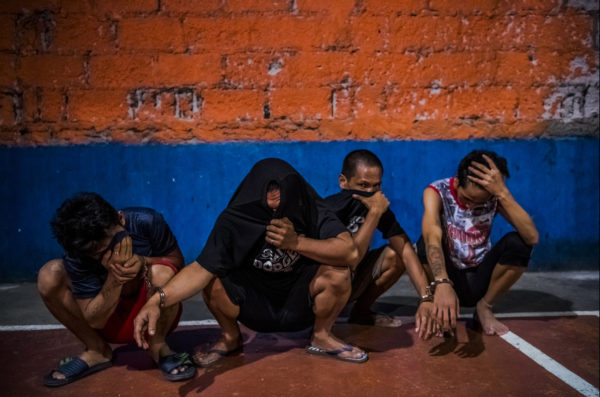
This photo is about intimidation and humiliation. Even more so, though, it’s about economics. The caption reads:
Four men arrested for possession of drugs in the Don Bosco neighborhood hid their faces from Berehulak’s lens. While in affluent neighborhoods, the police sometimes started with a polite knock on the door and then handed a pamphlet to a housekeeper outlining the repercussions of drug use. In poorer districts, the tactics were much harsher. The police grabbed teenage boys and men off the streets, ran background checks, and made mass arrests on the spot.
As the captions indicates, these men are victimized largely for lack of means. Squatting implies having no place. Being handcuffed together also compromises identity. Three of these men make sure the camera cannot see them. The fourth, angled as he is, conveys his resentment and hatred. Of course, what’s more soul-killing than converting humans first into pariahs, then death targets?
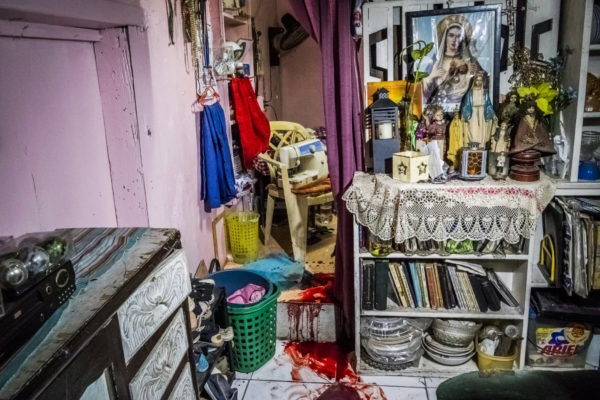
From the washing to the mending to the praying, we see a photo teeming with domesticity. As if the photo was desperate to reveal more, I sense the devastation of a wife or mother as much as the execution of a husband or son. The ultimate abomination is that the blood has been spilled in such very close quarters, blaspheming such intimacy. What chance is there to salvage the space, or faith, from the smear?
Berehulak’s vivid elicitation of political and physical carnage is not just reportage. What he also captures is a horrific portrait of the modern day authoritarian state run amok. With aggression and scapegoating in fashion, the Philippines has no monopoly.
— Michael Shaw
Photos: Daniel Berehulak for The New York Times. Caption 4: The blood of Florjohn Cruz, 34, stained the floor in his family’s living room, next to an altar displaying images and statues of the Virgin Mary, among other items.

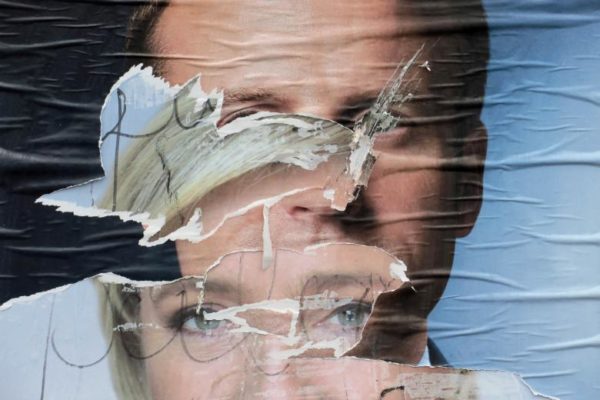
Reactions
Comments Powered by Disqus